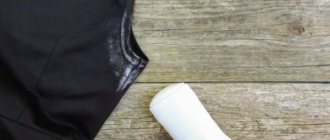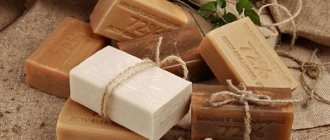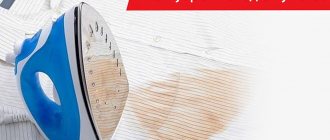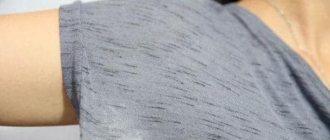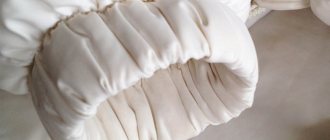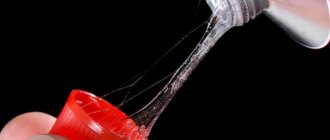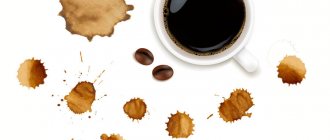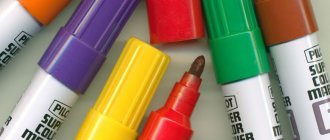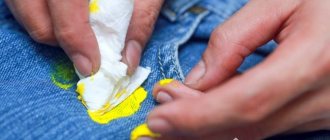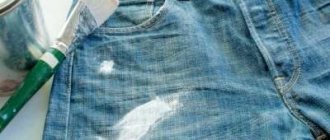Washing is designed to make things clean, but sometimes its results are disappointing. The situation when a washing machine stains clothes is familiar to many. You put your clothes or shoes in normal condition, dirty, but without stains, and you pulled out stained shirts, T-shirts, jeans, sneakers or sneakers from the machine.
Experienced housewives can make a whole list of the colors of stains on laundry from a washing machine:
- rusty, brown, red, orange, yellow;
- dark oil, black, gray;
- yellow on white things;
- blue, light blue, violet, gray;
- pink, red, blue, etc. (to match the color of bright washed items);
- bleached spots or white streaks.
There are various reasons why a washing machine gets dirty. And in 70% of cases, according to statistics from the RemBytTech workshop, it is not her fault. Let's figure out why stains appear on clothes or shoes after washing.
Why does the washing machine get dirty?
Gray, black or dark spots on clothes indicate that the owner of the washing machine does not maintain the equipment. Due to lack of care, dirt and mold form in the folds of the hatch cuff, in or under the detergent drawer, as well as in the drain filter.
Dirty cuff
If the washing machine is not properly maintained, a thick layer of gray dirt appears in the folds of the hatch cuff, as well as under it. When you touch it, things become smeared and unpleasant marks appear on them. You can clean the cuff using brushes and a cloth. You need to act carefully so as not to damage the rubber. It is not recommended to use
Mold in the tray
If the user does not regularly rinse the cuvette, does not open it after washing to dry and slams the hatch door, this leads to dampness inside the washing machine and, as a result, to the appearance of mold. In addition to contaminating laundry, it can negatively affect human health. You can detect mold by the specific smell inside the washing machine drum.
Mold deposits can be everywhere: in and under the detergent drawer, on the cuff, in the drum, pipes, at the top of the tank walls.
To get rid of mold, you need to pour baking soda into the powder cuvette, set the temperature to high and an additional rinse, and start the wash. If you cannot remove it the first time, you will need to repeat the procedure.
Contaminants in the drain system
A dirty drain filter can also cause mold. In washing machines with a standard drain pump, it spreads an unpleasant odor, and in expensive appliances with a recirculation pump it also leaves stains on the laundry. To avoid this problem, you should clean the drain filter regularly. You will also need to disassemble the washing machine and rinse the tube connecting the pump to the tank under a powerful stream of water. Dirt also accumulates in it, which is not washed out even when cleaning the device with citric acid or chemicals.
Mold in the powder compartment or pipes
Such phenomena can be found in homes where washing machine maintenance was completely absent or was carried out incorrectly. As a rule, this also happens when a person, after finishing washing, closes the powder compartment and the drum, not allowing them to dry properly.
Mold is a “lover” of dampness and, if you add a warm environment to this factor, you can create almost ideal conditions for it to form a huge amount of black mold, which will begin to release a large number of harmful spores into the air.
Where does mold most often form in the “insides” of a washing machine:
- In the cuvette (compartment) for pouring washing powder;
- In the pipes that lead from the cuvette to the water tank;
- On the walls of the drum;
- On the cuff;
- Inside the water tank.
Anyone with a normal sense of smell will be able to determine the “presence” of mold - its smell will immediately give everything away. Just stick your head into the drum and the pungent “aroma” will immediately hit your nostrils.
This will be the main reason to take a closer look at the remaining components of the stirlak. The procedure is like this:
- Carefully bend the hatch cuff and inspect the cracks;
- Take a look at the walls of the drum;
- Look also in the compartment for filling the detergent;
- Remove the compartment and inspect its opening.
In most cases, you will quickly discover an extremely unpleasant-looking black “cap” that has begun to develop in your machine. And, when clothes come into contact with this mold, they “acquire” dark, smeared dirt.
If this is your situation, it needs to be resolved extremely quickly. To do this, pour 300 g of baking soda into the compartment, turn on the highest temperature setting, and run the machine “idle” with double rinsing.
Such an aggressive “washing” of the machine itself will allow you to forget about the unpleasant problem with mold for a long time. If after the first time it doesn’t work, that’s okay, the process can be repeated until the mold disappears completely.
Grease stains on a down jacket
If your jacket or down jacket is damaged due to one of the above factors, do not be upset. After eliminating the source of the stains, you need to wash the product again. Among the most common types of contamination, it is necessary to note white stains from washing powder or greasy stains.
For greasy or oily stains, a dishwashing detergent with a grease-dissolving effect will help. It is necessary to treat contaminated areas with gel and leave the product in this form for 30-40 minutes. Then, without rinsing, soak in water at a temperature of 30-40 degrees for 2-3 hours, so that the molecules of the product penetrate into all the fibers where fat could get. Then do the washing.
Recommendations and videos
Avoiding stains after washing is easy. This requires:
- Follow the washing rules. Sort laundry by fabric, color and type of stain. Stick to the powder dosage.
- Do not use a faulty washing machine. Monitor the condition of seals and bearings.
- Care for SMA in accordance with the recommendations in the instructions.
- Check pockets for contents before washing.
- Wash items with metal parts only in special bags.
If you follow preventive measures, tips and recommendations, it is easy to avoid the appearance of new dark spots on things after washing. If trouble does happen, getting rid of them is not as difficult as it seems.
Pollution prevention
Simple prevention will help get rid of stains during washing and prevent damage to things. Necessary:
- Carefully check pockets for forgotten small items before putting clothes in the drum.
- Inspect items before washing; if decorative elements, buttons, zippers do not hold well, they need to be secured or removed. Otherwise, they will fall into the drum, and from there into the tank.
- After completing the program, remove the powder cuvette, rinse and dry. You also need to monitor the condition of the cuvette seat. There should be no dirt or mold on its walls.
- Thoroughly clean the drain filter once every two to three months. In large families, as well as when washing clothes made of wool and lint, this procedure should be carried out more often, preferably once a month. After washing down and feather items, the filter must be cleaned immediately after the end of the program.
- Clean the washing machine regularly using citric acid or chemicals. Recommended temperature is 90°C.
Brown spots appear on clothes after washing
The washing machine is designed to clean clothes from various contaminants, but not vice versa, and the formation of new contaminants after washing is unacceptable. If this does happen, you can determine its origin by the color of the stain and, using the advice of specialists, fix the problem.
Thus, red, brown and light brown, orange stains remain on the surface of the material in two cases:
- after washing in rusty water;
- when a metal object remains in the machine body for a long time.
Water quality
The quality of washing directly depends on the purity of the water. If rusty water flows from the tap, then turning on the machine is out of the question, since rust will not only stain all the laundry, but will also contaminate the internal parts of the machine. Most often, this problem occurs in houses with an old pipeline or after turning off the water for repair work.
In some regions, tap water has a high iron content. Light-colored clothes washed in such conditions become covered with slightly noticeable orange stains. In this case, you cannot do without installing a special filter.
Metal object in the tank
Another common reason for the formation of brown stains is the entry of an iron object into the body of the machine. Coins, nails, hairpins and pins that fall out of pockets and remain at the bottom of the tank become rusty over time and stain clothes.
To eliminate the cause of contamination, you need to unscrew the filter and remove unnecessary objects. Usually this simple operation is handled independently, without the help of specialists.
Low quality water
And especially rusty, which is typical for most pipelines in our apartments and old houses. It is easy to identify - it will have a dark color (due to rust), and dark stains will definitely remain on light-colored clothes after washing.
If this is your situation, then before washing you should turn on the water for a few minutes to let it drain. And, if the washing machine was on the delayed wash mode, and such water was poured into it, then you are guaranteed to ruin your things.
To solve this problem, you should use special water filters, which can be purchased at any plumbing store. And in the oldest houses, such filters need to be installed “in pairs” - for coarse and then fine water purification.
Why might stains still remain?
After washing, dirt can appear on the laundry not only due to small items forgotten in pockets. Common causes of pollution are:
- Blockages in the water pipe.
- Poor quality water with rust particles.
- Damage to bearings and seals in the machine.
- Clogged pipe or filter.
- Poor rinse quality.
- Poor quality powder that does not dissolve well in water.
If the cause of the pollution is a clogged water pipe, then this oversight can only be corrected by cleaning the pipe. Sometimes the cause of dirty spots is poor quality water.
Checking the quality of tap water is quite simple. To do this, you just need to wet a small piece of white cloth under the tap and evaluate the result. If the fabric has acquired a yellowish color or small particles of rust are visible on it, then you should think about it. To eliminate this problem, it is enough to place a filter on the pipe through which cold water is supplied to the machine.
If there are gray spots on the laundry after being pulled out of the drum, this may be due to a failed seal. In this case, the thick lubricant applied to the spare part penetrates directly into the drum of the machine and significantly stains things.
A broken oil seal must be replaced with a new one or cleaned as soon as possible. To clean parts of the washing machine, do not use aggressive detergent powders, as they damage the rubber components.
Brown flakes may appear in the washing machine and stain your laundry. This is due to a clogged drain pipe or filter. These parts can become clogged if small buttons, pebbles or other debris get into the drain hole.
The instructions for the washing machine indicate that you need to clean the drain filter and hose every few months, only then can you expect normal washing quality.
Rusty tap water
If rust stains appear on your clothes, you should definitely check the condition of the water entering the machine from the water supply. The easiest way is to hold a white cloth under running tap water for a while. If after 5-7 minutes a characteristic rusty stain forms on the fabric, the water is too rich in iron, which causes contamination of the laundry during washing. In this case, a special filter must be installed on the pipe leading to the machine, which will bind metal particles. As a last resort, if it is not possible to install a filter or it does not cope with this task, before washing it is necessary to drain the stagnant water from the water supply for at least 30 minutes.
How to eliminate yellowing of things
You can remove old stains from clothes using proven folk methods.
White laundry with stains is pre-soaked in water with the addition of alkaline soap. Apply a small amount of hydrogen peroxide to the yellow stains. The appearance of hissing means that the substance has begun to interact with the fibers of the fabric.
The product is kept for half an hour, after which it is rinsed and washed in the usual way.
The pharmaceutical drug Aspirin will help eliminate yellowish marks on your favorite white things. The clothes are soaked in a soap solution, 2 tablets of the product are placed in a glass, a few drops of water are added and until the tablets are completely dissolved. The resulting gruel is used to smear the spots. The product is kept for 2-3 hours, after which it is rinsed and placed in a washing machine.
A universal method for removing old marks is the use of soda with hydrogen peroxide.
To prepare the whitening composition, you will need:
- 20 g sodium bicarbonate;
- 1 bottle of peroxide;
- 5-10 g dishwasher detergent.
Rub the mixture into the stains with a brush and leave for several hours. After this, the laundry is washed and rinsed thoroughly.
You can buy dry alcohol in pharmacy chains. The white item is pre-soaked in laundry soap for 60 minutes. The fuel is diluted with a small amount of liquid and applied to the yellow spots for a while. The product can be washed in any convenient way.
Fairy
Regular Fairy dishwashing detergent will help you cope with stubborn yellow stains from sweat. 10 g of gel must be combined with a glass of water and mixed thoroughly. The mixture is poured onto the yellowed marks, left for 3 hours, after which use regular washing with laundry soap.
Table salt will help remove yellowish dirt caused by wine or beer. To achieve whiteness, you need to pour salt on the place where the stains appear and let it sit for some time.
This method will not work if the product has been lying around for a long time.
Why do yellow marks appear on clothes and underwear?
It is impossible to give an exact answer to the question of why yellow spots appear on white fabric. However, a number of factors can be identified that contribute to the formation of yellowness:
- Sweating. Sweat contains large quantities of urea, which forms a yellow “sediment” that is especially noticeable on white things.
- Use of deodorants. Cosmetics can combat the odor of sweat, but do not prevent its formation. Particles of sweat, combining with substances included in deodorants, contribute to the appearance of stains.
- Long-term storage. Traces of yellow color appear on white things that have been lying in the closet or on the mezzanine for a long time. Such defects are not easy to remove; you will have to put in a lot of effort.
- Increased air humidity. If the air in the room where the clothes are located is too humid, this can cause the appearance of the white fabric to change.
- Composition of washing powder and its concentration. Sometimes it is enough to change the detergent, or not use it as much, and the problem of yellow spots will disappear by itself.
- Whitening products. Bleach often causes yellow stains to appear on white clothes. This occurs when this product is used incorrectly or due to the chlorine content in it.
- Wash in hot water. It is not recommended to wash most materials in hot water; this leads to the fact that not only the existing dirt “eats” into the fibers more strongly, but also unnecessary yellowness appears.
- Highly hard water. Metal salts give water hardness, and the more of them it contains, the harder the water. If these substances come into contact with fabric in large quantities, yellow spots may also appear.
- Using steam irons. You can often find yellow or rust marks on a white T-shirt or bed linen immediately after they have been ironed. This happens in cases where the owner neglects to clean the iron and rust accumulates inside it.
These factors contribute to the appearance of persistent stains on white items. However, if you find stains on your favorite T-shirt, blouse, bed linen or white panties, do not despair. There are many ways to remove yellow spots.
Causes of unpleasant machine smell
There are many reasons for the unpleasant smell of laundry. The main ones are incorrect operation of the washing machine and improper storage of laundry, namely:
- Lack of drum ventilation or poor quality ventilation. After each wash, a small amount of liquid remains in the tank. When sealing occurs when the door is closed, the water will become moldy, creating favorable conditions for the development of microorganisms that cause stench. Never close the washing machine door tightly after washing!
- Unsuitable washing temperatures. At high temperatures and prolonged treatment of bed linen or casual clothing, any powder (loose or liquid) will dissolve, but when washed at a temperature of 30°C, it partially dissolves, and the residues are deposited on the walls and hoses, which also causes a stench.
- Excessive use of powders. As in the previous case, powder particles accumulate, creating an atmosphere for the development of pathogens.
- Exhaust hose connection is incorrect. In this case, the entire principle of liquid removal is violated, which is why the clothes smell like sewage.
- Storing dirty laundry in a drum. The smell of sweat, dirt and moisture contribute to the appearance of dog odor. It is more rational to use a special basket for storing laundry.
Note! If a bad smell is caused by a breakdown of the washing machine, you should not fix it yourself without special skills! These measures lead to damage to the device or damage to the laundry being washed.
Once the source of mustiness has been identified, we remove it and manually clean the seals and other elements of the machine.
The washing machine is to blame
Sometimes the root of the problem lies in the washing machine itself. This happens if the circulation of water in the washing machine is disrupted and too little water enters the drum. If there is not enough liquid, the detergent does not have time to dissolve and remains on the clothes and contaminates them.
To correct the situation, you need to clean the drain system of the machine, or rather, the garbage filter. In modern machines it is “hidden” behind the technical hatch in the lower right part of the unit body, and in older models it is behind the rear panel. All you have to do is open the door and check the trash can. It often becomes clogged with dirt, hair and other small debris.
The following points also make it difficult to dissolve the powder and rinse clothes:
- if you wash with a full drum (to save money, a full load is good, but in this situation, things cannot “float” freely and rinse out);
- if the machine has not been cleaned for a long time (dirt, powder residues accumulate in the machine and partially settle on the items being washed);
- when there is no filtration system (hard water contains many impurities that leave a residue on clothes).
Getting rid of powder deposits is easy - just rinse your clothes again in clean water. But it is better to prevent such contamination, choose liquid detergents, monitor their dosage, install filters and clean the machine regularly.
Experienced technician and fair prices for repairs
The service center offers restoration of household appliances. We work with washing machines from all manufacturers. Diagnostics and restoration are carried out at the customer’s home; there is no need to waste time and money on transportation. The technician will quickly detect a breakdown, indicate the cost of restoration, or perform a flush immediately after diagnosis. The prices will please the customer. Extensive experience in working with household appliances allows us to provide a guarantee on the work performed. This means that after the master leaves, you will confidently use the equipment and stop worrying about your things.
Features of removing stains on denim
Denim fabric has the ability to absorb any dirt, so if you ignore the problem, you may encounter damage to your favorite things. When washing jeans, you need to remember the following rules:
- Clothes that are heavily soiled require pre-soaking. To do this, use soap shavings or any other cleaning agent. Soaking time varies between 30-60 minutes. It is not recommended to keep jeans in water any longer.
- Machine washable at temperatures up to 40 degrees, otherwise the denim may lose its shape and color.
- Stain removers and bleaches are not recommended in such cases, as they can eat away at the fabric and lead to loss of its color characteristics.
- It is recommended to wash dark jeans with a small amount of vinegar; it helps preserve the color and enhance the effect of the washing powder.
Some denim items are considered quite fragile, so it is prohibited to use aggressive chemical products for washing them. Many housewives use home methods for removing stains:
- Thoroughly rub the problem area with half a bar of laundry soap, moisten it with a small amount of water and leave the item for 1 hour. After that, it is rinsed in cool water and sent to the washing machine.
- Pour 1 spoon of turpentine into a large bowl of water and mix the ingredients. Place dirty clothes in a cup, leave for 20 minutes and rinse in clean warm water. To get rid of an unpleasant odor, the denim item is sent to the machine and washed using powder and conditioner.
- To preserve the color characteristics of the fabric, pour 2 tablespoons of apple cider vinegar into a bowl of water, soak the laundry in the resulting solution, and then wash it using an automatic washing machine.
If home methods do not help remove stains, you need to use chemicals or take the item to the dry cleaner.
What to do if only a specific thing smells bad?
Before carrying out the above measures, you need to make sure that the problem is in the machine and not in a separate product. Often, terry robes or towels cause an unpleasant odor that spreads to all items in the drum. This may be a consequence of improperly washing the item (non-compliance with the regime, temperature or inappropriate detergent) or the appearance of mold on it.
The second scenario is typical for items that are not dried correctly. Terry needs an influx of fresh air, so towels and robes made of thick, fleecy fabric should not be hung in the bathroom, but at least on a ventilated balcony.
To eliminate unpleasant consequences, you need to try one of the following options:
- Soak the damaged product briefly in a cool vinegar solution (no more than two tablespoons per bowl of water), rinse and dry according to the rules. If necessary, you can slightly increase the concentration of the composition.
- We wash terry clothes in the machine according to the traditional scheme, but add an additional rinse. After this, you can even rinse the products by hand again.
- We wash the terry separately from all other products on the recommended cycle, but pour a little vinegar into the conditioner tray instead of fragrance. We install additional rinsing without drying.
The listed approaches should help; usually a full cycle of restoration measures is sufficient. The absence of a positive effect indicates serious problems with the device. In this case, you will have to contact the repair department for help.
The cuff is dirty or there are problems with the seal
Mold in the middle of the washing machine is just a small thing. The reason why a housewife gets her things dirty may also lie in other problems. So, if the washing machine has been improperly cared for (or not cared for at all) throughout the year, a thick layer of gray dirt will accumulate on the cuff and under it. After washing, it will appear as small gray spots on things.
What to do with such a problem? You just need to take a medium-hard brush (a toothbrush will do), a rag, and start cleaning the cuff of all this “good.” Plaque must be removed wherever possible - from every crack. The main thing is not to overdo it and not harm the cuff.
If after washing you take out items with oil or fuel oil stains, then the problem in 90% of cases lies in the seal. The thing is that when the seals wear out, they begin to throw oil into the water tank, which then ends up on clothes.
In such a situation, you need to act extremely quickly, since when they “die,” the seals will not only stain the fabric, but will also constantly take on a large flow of water. This will lead to corrosion and the bearings will very quickly become unusable.
It may be that you are too late and the bearings have already broken. They will “give” themselves away by creaking and grinding during washing. As in the first and second situations, urgent replacement of oil seals and bearings is necessary.
This procedure is quite complicated and it is best to entrust it to professional craftsmen. Of course, you can try it yourself, but then you will have to do the following:
- Completely disassemble the machine;
- Make a cut using a grinder and remove the tank;
- Carefully remove the failed bearings and install new ones.
It's time to change the filter
Gray stains, matted flakes of dirt, stains - all this may indicate that the filtration system is clogged. Freshly washed items give off a musty smell that cannot be eliminated by repeated washing. Over time, this smell begins to spread throughout the room where the device is located.
Dirt constantly accumulates in the filter, and fungus and mold can grow on it. If measures are not taken in time, the filtration system will fail and will have to be replaced. How to prevent filter damage:
How can you remove yellow stains from white clothes that have been lying around for a long time?
You can remove underarm stains using products such as:
- vegetable oil;
- hydrogen peroxide;
- soda;
- pharmaceutical preparations;
- alcohol;
- lemon acid.
Vegetable oil with bleach
To prepare you will need:
- Chlorine-free bleach – 2 tbsp. l.
- Sunflower oil – 2 tbsp. l.
- Washing powder – 3/4 cups.
- Stain remover (optional) – 2 tbsp. l.
- Boiling water – 5 l.
Mix the ingredients and leave the clothes for 12 hours. Then put it in the washing machine, adding any detergent.
Hydrogen peroxide and soda
To remove a stain using this solution, you will need:
- hydrogen peroxide – 2 tsp;
- soda – 2 tbsp. l.;
- dishwashing gel – 2 tsp.
Mix the ingredients until you get a thick consistency. Add soda if necessary. Apply to stains and wait 20 minutes. After wiping the stain, put it in the machine and pour in the stain remover.
You can also soak the item in a saturated soap solution or washing powder along with a teaspoon of vinegar. Then mix soda, water and salt until it becomes a thick paste. Apply to the stain, wait 2 hours, rinse well.
Pharmacy products
It is not easy to remove old stains using conventional methods at home. Some medications will help:
- Hydrogen peroxide can be used. To do this, soak the clothes and then apply the product. A hissing foam forms, indicating that it has begun to interact with the fabric. Wash and rinse the item.
- Crush two aspirin tablets and add a little liquid. Soak the product in water and place the mixture on the stain. Leave for 2-3 hours.
- Grind the alcohol in dry form, pour in the liquid until a mushy mass appears. Apply to stains and leave for several hours. Rinse afterwards.
Alcohol and citric acid
If the case is not advanced, you can prepare a remedy from the following ingredients:
- warm water – 1 l;
- citric acid – 1 tbsp. l.
Leave clothes in the mixture overnight. A solution with the addition of vodka or alcohol will also be effective.
If the item is in a more neglected state after long-term storage, you should combine these ingredients:
- Warmed alcohol - 1 tsp.
- Citric acid – 1 pinch.
Dip the stain into the product, then wash the item as usual. It is advisable to use high-quality powder.
A mixture of ammonia with lemon juice squeezed from one fruit will also help. It will easily wipe off dirt from products of any color.
Instructions
Baking soda is an affordable, natural, and versatile solution for removing stains from fabrics, making them soft, and refreshing the colors of items.
1 answer and comment
Ammonia is a universal cleaner for all types of fabrics, carpets, fur, leather, suede products.
replies and comments
Vinegar is an effective, natural, and versatile fabric cleaner and stain remover.
replies and comments
Gasoline is a cleaning agent against stains on clothes and skin.
replies and comments
Lemon juice is a universal cleaner that can cope with any dirt and unpleasant odors.
2 replies and comments
Boric acid is an effective and affordable means for bleaching and cleaning fabrics, including wool and silk.
3 replies and comments
Hydrogen peroxide is an indispensable cleaning agent for white fabrics, fur, suede, and wool.
replies and comments
Salt is a universal, harmless remedy for removing any dirt from fabrics, as well as making them soft and refreshing colors.
replies and comments
Mustard is a natural, safe remedy for removing various stains from fabrics, including delicate ones.
replies and comments
Toothpaste: More than just for brushing your teeth, it's an all-purpose cleaner for so many things
replies and comments
Vegetable oil: non-standard uses - from removing chewing gum to washing and bleaching kitchen towels and linen
replies and comments
Acetone – effective removal of grease stains and stains of unknown origin
replies and comments
Starch is an affordable natural remedy for removing stains from fabrics, tidying clothes and shoes, and eliminating unpleasant odors.
replies and comments
Laundry soap is a natural, affordable and highly effective means for washing clothes, bleaching fabrics and removing many types of stains
replies and comments
Solvents are indispensable cleaning agents for white and colored fabrics, fur, silk, wool.
replies and comments
Whitening and removing stains by boiling is an affordable and effective way to remove stains
replies and comments
Milk: delicate, gentle removal of difficult stains from colored and white natural fabrics
replies and comments
Alcohol as a cleaning, antimicrobial and antifungal agent
replies and comments
Cigarette ash - as a cleaning, absorbent and polishing agent
replies and comments
Aspirin as a stain remover: effective savings, removal of stains and odors
replies and comments
Cosmetic scrub as a cleaning agent - when and how it can be used to clean fabrics and other products
replies and comments
Crushed eggshells – as a natural bleach and cleaner
replies and comments
Kefir as a cleaning agent: an original, simple and inexpensive way to get rid of stains
replies and comments
Castor oil - as a household cleaner for fabric and leather products
replies and comments
Vaseline – medical and cosmetic, as a means for dissolving contaminants, caring for leather and wood products
replies and comments
Dishwashing detergent for removing greasy stains on clothes and furniture
replies and comments
Why might stains appear after washing?
The actions that will help get rid of them depend on the accuracy of determining the origin of the stains. The most difficult case is when several types of marks are combined at once. In this case, a whole range of measures will be required to solve the problem. However, some actions recommended on the Internet are simply dangerous for clothes! And if you follow the advice of an unknown well-wisher, you can ruin an expensive and beloved thing.
Rice. 2 — Washing clothes in a machine
White spots
Typically, the cause of these marks is bleach. If you use it incorrectly or buy a low-quality one, white marks remain. If the fabric is burned by the bleach, the item will have to be thrown away. However, if the bleach is of high quality, the wrong dosage was simply used, the traces can be removed. To do this, you need to rinse the item thoroughly in cold water, or in a washing machine.
But what if the fabric is burned out and it can no longer be removed, but you want to save the thing? In this case, there is only one way out - painting the thing. Some people recommend painting over the white areas with a permanent marker or rubbing alcohol on an undamaged area of the fabric to dissolve the paint, and then using the same cotton pad to rub the white mark. From this procedure, it should be partially painted with paint removed from the whole area. However, neither one nor the other method is suitable for clothes that need to be worn, for example, to work, because it will be visible that the item is poorly dyed. The best solution is to take it to a dry cleaner for painting or paint it completely at home by purchasing a product specially designed for this.
Yellow spots
They are left on clothes by a product to protect the machine from scale. They also remain after some types of powder (however, powdered products often leave blue marks). Yellow marks from the powder occur if, when reacting with water, the product turns yellow and then stains things.
Also, occasionally the composition of water causes such a problem. In some areas, the water is very hard, with a lot of impurities. And they, settling on clothes, leave yellow marks. These can be both large areas and small points.
Dark spots
Light marks are not visible on every item, unlike, for example, black and brown ones. They will cause the greatest horror to the owner of the dress, since they are the most difficult to remove and can remain noticeable for a long time.
What are the reasons why stains appear on clothes after washing in a machine?
- washing machine breakdowns;
- dirt on the rubber rim;
- mold in the unit.
Rice. 3 – Mold in the washing machine
Failures can also be different, for example, problems with a bearing, clogged drain hose or filter. How to distinguish them? If the hose or filter is clogged, small marks will appear, and if there are problems with the bearing, streaks will appear.
Rust stains
Rust stains can appear for a variety of reasons, and in order to get rid of the problem, it is important to find out what the exact reason is in your particular case. They can be called:. They can appear for various reasons
And in order to get rid of the problem, it is important to find out what exactly the reason is in your particular case
They can appear for various reasons
And in order to get rid of the problem, it is important to find out what exactly the reason is in your particular case
They can be called:
- insufficiently rinsed laundry with washing powder residues;
- water with too high levels of iron;
- low quality metal fittings on things.
The difficulties are that it is not easy to distinguish one reason from another, or they can be combined. If the unfiltered water that comes out of your tap has an orange color or a rusty taste, then there is most likely a problem with the water. In this case, a filter is installed on the washing machine. It is inexpensive and will save a lot of good
And if you know that there is poor water pressure in the pipes in your home, we can conclude that the powder is not washed out well. Weak water pressure can also be seen from the fact that the drum of the machine is not filled with enough water, and things float in a very small amount of it. Poorly diluted powder can cause not only red spots, but also blue ones. However, the cause of blue marks is usually easy to diagnose, since they almost always appear from the powder.
If stains remain from fittings (clasps, pendants), then they will most likely be bright, distinct, and will begin to appear in those places where the fabric came into contact with these fittings.
Loading …
Using detergents
Let's begin to consider the problem from small to large, that is, initially the most common, but not serious, reasons will be presented. Why does the machine not wash, but dirty things? So, let's list these reasons:
- 1Overloading of equipment. If you put more than the maximum permissible amount of laundry into the drum of the machine, it is likely that pieces of detergent will get stuck in the folds of the clothes, and accordingly, it will not dissolve well. Also, the detergent may not dissolve well if it and the dispenser are placed in the wrong place in the drum. The dispenser should be placed directly on top of the clothing, close to the back wall of the drum.
- 2Using the wrong amount of powder. If there is a lack or excess of detergent, a whitish film may appear on the drum after washing, which is often mistaken for insoluble powder. In fact, this phenomenon occurs as a result of the contact of detergent elements and cold water minerals.
- 3The reason may be low water pressure, but this only applies to those cases when the powder is not poured into a drum, but into a special container. With low pressure, most of the detergent enters the drum at the beginning of the wash, and the remainder may well appear during the rinsing stage of the clothes.
Little things forgotten in pockets
In some cases, the source of contamination of things gets into the drum along with the clothes. Many people neglect the need to check their pockets and leave a lot of small things there that can stain the rest of the laundry during washing. These are mainly cosmetics, stationery and food. Small metal objects can get into the washing machine tank from your pockets, which over time begin to rust and also stain your laundry. Getting rid of stains that appear this way will be quite problematic.
Foreign objects falling out of the pocket may end up at the bottom of the tank or drum, or get stuck between the two parts. To make it more convenient to remove objects, it is advisable to first remove the heating element. In most cases, if you cannot visually locate an item, it is most likely stuck before reaching the bottom of the tank. First of all, you need to unscrew the bolt that secures the pulley. The part must be dismantled, and the bolt must be inserted into place, not screwing in completely. You need to carefully tap the end of the shaft with a hammer until you can slightly move the shaft together with the drum. By manually turning the drum, you can free the stuck object. The detected object can be removed from the bottom through the hole for the heater using a small wire hook. You can also use a small magnet to remove metal parts.
How to solve a problem?
Proper and regular care of your washing machine will avoid the appearance of unwanted contaminants of various kinds after washing and will extend the life of your household appliances.
Regular cleaning of the cuff
Having freed the drum from washed clothes, you need to take out any small objects that accidentally got into it and carefully wipe the folds of the rubber cuff with a dry cloth. For severe dirt, you can use a medium-hard brush.
Cleaning the powder tray
If you don’t take care of the powder dispenser after each wash, then you shouldn’t be surprised why the washing machine stains your laundry with black and gray spots. The plastic tray must be regularly removed from the device, washed under running water and dried or wiped dry.
In advanced cases, when all parts of the unit are covered with a dark moldy coating, it is necessary to clean it without laundry. To do this, pour 250 g of tea soda into the powder tray, set the maximum temperature, additional rinse and turn on the machine. At the end of the work, all parts are thoroughly wiped, and the loading hatch is left open for ventilation.
Dirty filter
The filter collects small debris, lint, and dirt. Especially if wool, velor and other fluffy fabrics are often washed. To prevent dirt from the filter from spoiling your laundry with gray spots, you must remove the filter at least once a month and wash it under running water. To remove unpleasant odors, you can run the machine without laundry by replacing the powder with citric acid. The water temperature is 90°C.
Replacing oil seals
It is better to entrust the work of replacing oil seals to specialists. Usually, along with the seals, the bearings also fail, so you will have to replace two parts at once, which are located far in the depths of the unit.
Powder change
Low-quality powder can leave rainbow spots and streaks on clothes. You can recognize a fake by dissolving a handful of powder in hot water. If the detergent produces a lot of foam, but there are whole granules left at the bottom of the container, then the powder is not suitable for washing in an automatic machine.
In addition, stains can appear if the rinsing is insufficient, the wash cycle is set incorrectly, or the drum is overloaded.
Installation of water filters
If the quality of tap water does not meet accepted standards, and brown turbidity often flows from the tap, additional filters should be installed. In houses with old pipes, experts advise installing two filters: for coarse and fine cleaning. In any case, before starting washing, it would be a good idea to check whether the water supplied to the machine is rusty. It is better to wait a few hours until the water supply is restored than to get rid of orange stains later.
Preparing laundry
Even before starting the washing machine, it is necessary to carry out preparatory measures.
These include:
- checking items for damage (holes, poorly sewn buttons, etc.);
- checking pockets to ensure that foreign objects do not fall into the drum;
- sorting things;
- stain removal.
If the clothes that need to be washed have damage, they must be dealt with before washing.
Sorting
The first thing you have to deal with is sorting the laundry that needs to be washed.
All items should be sorted in advance, guided by the following laundry parameters:
- Color (dark linen is washed separately, white - separately, colored - also separately).
- Material composition (cotton, wool, synthetics, etc.).
- The density of things and texture (jackets, underwear, etc.)
Items in contrasting shades should be washed separately. Even if they do not shed, you should not put them in the same load, as this will affect the quality of processing, and even dark items may appear dusty if you put them in the drum along with white laundry.
Sorting all items by type of fabric is necessary due to the fact that different materials require their own washing modes, setting the temperature, choosing a detergent, etc. Also, all items should be separated by type of clothing.
For example, jackets should not be processed together with underwear and shoes, even if they are the same color. Bed linen can be washed separately, shirts can be placed in the same load as T-shirts and tank tops, etc.
If there are too many things of one type, they can be divided into two or more lots.
Removing stains
Heavily soiled clothing with significant stains may not be washed out in the normal wash cycle. It is recommended to treat such contaminants in advance. Not only special stain removers are used for these purposes, but also homemade folk recipes.
They choose a means of dealing with stains based on what caused the marks and what material the item is made of.
How to remove stains from clothes?
Even if you eliminate the problem of marks appearing after washing, you will have to do something with those things that are already damaged. How to remove stains without ruining your clothes? Excessively aggressive agents can simply destroy the tissue structure. Therefore, it is not recommended to use cleaning products for tiles, bathrooms, and toilets to tidy things up. Such products often contain bleach or acid, which negatively affects the fabric and makes it weak and vulnerable. It is better to ignore any recommendations to pour Domestos or another similar product on the dress. If, of course, you want to wear the item for a long time.
Rice. 4 – Removing stains
To remove stains, it is best to use special compounds that are sold in almost all household chemical stores or supermarkets. The means are different
It is important that the description says that they remove exactly the type of stains that have appeared on things. For example, it may indicate that the product is effective against mold and mildew
Good stain removers are German, but you can also find some good ones from domestic manufacturers.
DIY repair
The user can eliminate defects not related to the technical condition with his own hands.
- Set the correct program to suit your clothing.
- Choose a good detergent (recommended by the manufacturer or time-tested).
- Soften the water to prevent failure of the heating element.
- Pre-soak fabric with stubborn stains or wash them with laundry soap.
- In rare cases, the user can independently replace the bearings or belt (if there is an understanding of the design of the device).
In all other cases, you must contact the service.
